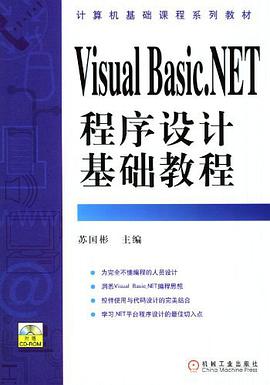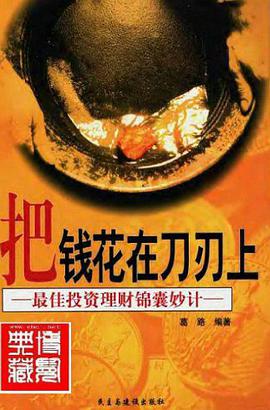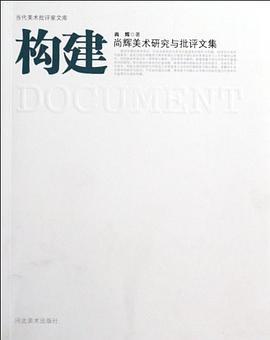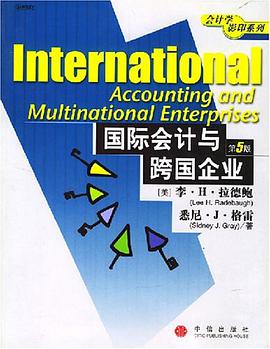

具体描述
本书介绍了与计算机体系结构相关的各种主题。第1章到第5章介绍了计算机体系结构课程中的许多基本概念,包括:数据表示与算术运算、计算机组织、编程模型、处理器设计。第6章和7章分别讨论了流水线和指令级并行性方法,它们都是影响现代处理器的重要因素。第8章到第10章介绍了各种存储器系统的设计,包括存储器层次结构、高速缓冲存储器和虚拟存储器。第11章讨论了输入/输出系统。第12章介绍了多处理器系统。
通过阅读本书,读者能够迅速了解与计算机体系结构相关的各种知识,并将其应用到其他课程的学习和编程实践中。本书内容全面,每章均提供了大量的实例和习题,是学习计算机体系结构课程的一本极佳教辅材料。
作者简介
目录信息
chapter i introd uction
l .l purpose of this book
l .2 background assumed
l .3 material covered
l .4 chapter objectives
l .5 technological trends
l .6 measuring performance
l .7 speedup
l .8 amdahl's law
l.9 s
- solved problems
chapter 2 data representations and computer arithmetic
2. l objectives
2.2 from electrons to bits
2.3 binary representation of positive integers
2.4 arithmetic operations on positive integers
2.5 negative integers
2.6 floating-point numbers
2.7 s
solved problems
.chapter 3 computer organization
3. i objectives
3 .2 introduction
3 . 3 programs
3 .4 operating systems
3 .5 computer oganization
3.6 summary
solved problems
chapter 4 programming models
4. l objectives
4.2 introduction
4.3 types of instructions
4.4 stack-based architectures
4.5 general-purpose register architectures
4.6 comparing stack-based and general-purpose register
architectures
4.7 using stacks to implement procedure calls
4. 8 summary '
solved problems
chapter 5 processor design
5 .l objectives
5 .2 introduction
5 .3 instruction set architecture
5 .4 processor microarchitecture
5.5 s
solved problems
chapter 6 pipelining
6. l objectives
6 .2 introduction
6. 3 pipelining
6.4 instruction hazards and their impact on throughput
6.5 predicting execution time in pipelined processors
6.6 result forwarding (bypassing)
6.7 s
solved problems
chapter 7 instruction-level parallelism
7. l objectives
7 .2 introduction .
7.3 what is instruction-level parallelism?
7.4 limitations of instruction-level parallelism
7.5 superscalar processors
7.6 in-order versus out-of-order execution
7.7 register renaming '
7.8 vliw processors
7.9 compilation techniques for instruction-level palallelism
7.io s
solved problems
chapter 8 memory systems
8. l objectives
8 .2 introduction
8.3 latency, throughput and bandwidth
8.4 memory hierarchies
8.5 memory technologies
8.6 s
solved problems
chapter 9 caches
9. l objectives
9.2 introduction
9.3 data caches, instruction caches, and unified caches
9.4 describing caches
9.5 capacity
9.6 line length
9 .7 associativity
9.8 replacement policy
9.9 write-back versus write-through caches
9. io cache implementations
9.il tag arrays
9.12 hit/miss logic
9.13 data arrays
9. 14 categorizing cache misses
9.15 multilevel caches
9.16 s
solved problems
chapter io virtual nemory
l0.l objectives '
10.2 introduction
10.3 address translation
10.4 demand paging versus swapping
10.5 page tables
10.6 translation lookaside buffers
10.7 proteaion
10.8 caches and virtual memory
10.9 summary
solved problems
chapter il i/o
l l.l objectives
l l.2 introduction
1l.3 i/0 buses
l l.4 interrupts
l i.5 memory-mapped i/o
l l .6 direct memory aceess
i l.7 i/o devices
l l.8 disk systems
11.9 s
solved problems
chapter i 2 multiprocessors
12.1 objectives
12.2 introduction
12.3 speedup and performance
1 2.4 multiprocessor systems
12.5 message-passing systems
l 2.6 shared-memory systems
12.7 comparing message-passing and shared memory
12.8 summary
solved problems
index
· · · · · · (收起)
l .l purpose of this book
l .2 background assumed
l .3 material covered
l .4 chapter objectives
l .5 technological trends
l .6 measuring performance
l .7 speedup
l .8 amdahl's law
l.9 s
- solved problems
chapter 2 data representations and computer arithmetic
2. l objectives
2.2 from electrons to bits
2.3 binary representation of positive integers
2.4 arithmetic operations on positive integers
2.5 negative integers
2.6 floating-point numbers
2.7 s
solved problems
.chapter 3 computer organization
3. i objectives
3 .2 introduction
3 . 3 programs
3 .4 operating systems
3 .5 computer oganization
3.6 summary
solved problems
chapter 4 programming models
4. l objectives
4.2 introduction
4.3 types of instructions
4.4 stack-based architectures
4.5 general-purpose register architectures
4.6 comparing stack-based and general-purpose register
architectures
4.7 using stacks to implement procedure calls
4. 8 summary '
solved problems
chapter 5 processor design
5 .l objectives
5 .2 introduction
5 .3 instruction set architecture
5 .4 processor microarchitecture
5.5 s
solved problems
chapter 6 pipelining
6. l objectives
6 .2 introduction
6. 3 pipelining
6.4 instruction hazards and their impact on throughput
6.5 predicting execution time in pipelined processors
6.6 result forwarding (bypassing)
6.7 s
solved problems
chapter 7 instruction-level parallelism
7. l objectives
7 .2 introduction .
7.3 what is instruction-level parallelism?
7.4 limitations of instruction-level parallelism
7.5 superscalar processors
7.6 in-order versus out-of-order execution
7.7 register renaming '
7.8 vliw processors
7.9 compilation techniques for instruction-level palallelism
7.io s
solved problems
chapter 8 memory systems
8. l objectives
8 .2 introduction
8.3 latency, throughput and bandwidth
8.4 memory hierarchies
8.5 memory technologies
8.6 s
solved problems
chapter 9 caches
9. l objectives
9.2 introduction
9.3 data caches, instruction caches, and unified caches
9.4 describing caches
9.5 capacity
9.6 line length
9 .7 associativity
9.8 replacement policy
9.9 write-back versus write-through caches
9. io cache implementations
9.il tag arrays
9.12 hit/miss logic
9.13 data arrays
9. 14 categorizing cache misses
9.15 multilevel caches
9.16 s
solved problems
chapter io virtual nemory
l0.l objectives '
10.2 introduction
10.3 address translation
10.4 demand paging versus swapping
10.5 page tables
10.6 translation lookaside buffers
10.7 proteaion
10.8 caches and virtual memory
10.9 summary
solved problems
chapter il i/o
l l.l objectives
l l.2 introduction
1l.3 i/0 buses
l l.4 interrupts
l i.5 memory-mapped i/o
l l .6 direct memory aceess
i l.7 i/o devices
l l.8 disk systems
11.9 s
solved problems
chapter i 2 multiprocessors
12.1 objectives
12.2 introduction
12.3 speedup and performance
1 2.4 multiprocessor systems
12.5 message-passing systems
l 2.6 shared-memory systems
12.7 comparing message-passing and shared memory
12.8 summary
solved problems
index
· · · · · · (收起)
读后感
评分
评分
评分
评分
评分
用户评价
评分
评分
评分
评分
评分
相关图书
本站所有内容均为互联网搜索引擎提供的公开搜索信息,本站不存储任何数据与内容,任何内容与数据均与本站无关,如有需要请联系相关搜索引擎包括但不限于百度,google,bing,sogou 等
© 2025 book.wenda123.org All Rights Reserved. 图书目录大全 版权所有




















